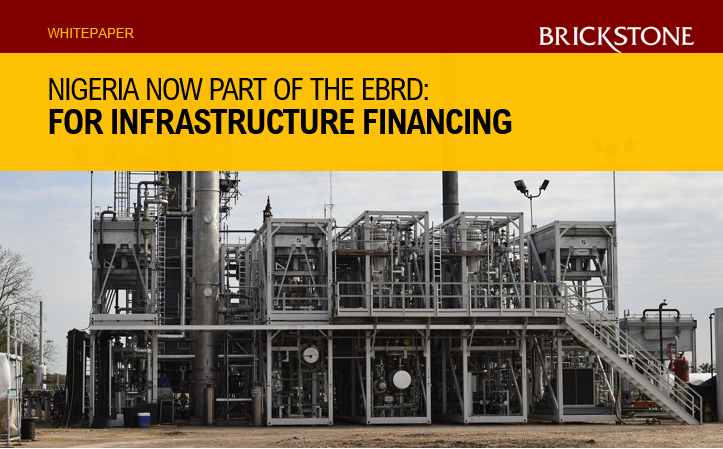Understanding the Potential of Low Sulphur Fuel Oil (LSFO)
Low Sulphur Fuel Oil does not only aid in the reduction and repair of environmental damages caused by the emission of Sulphur dioxide by over 65,000 ships globally, it also benefits the world in an economical and operational sense. In addition to that, it also eradicates the health issues identified with environmental pollution. In furtherance to these advantages, the International Maritime Organization’s regulation of 2020 seeks to promote Environmental, Social, and Governance commitments by encouraging the Maritime Sector to increase utilization of Low Sulphur Fuel Oil.
The team of experts at Brickstone Africa have developed this White Paper with their wealth of experience and extensive research on Low Sulphur Fuel Oil, for the benefit Investors in Africa and abroad, as well as other players in the shipping and energy industry.
This White Paper first explores the opportunities for different sectors of the oil market and considers how the demand-supply gap for Low Sulphur Fuel Oil (LSFO) once the International Maritime Organization’s regulation of 2020 is implemented, would affect these sectors. It considers the opportunities for the High Sulphur Fuel Oil Marketing Sector, the Low Sulphur Oil-Blending Sector, the Refinery Investment Sector, as well as the Bunker-Fuel Sourcing Sector.
Moving forward, this White Paper gives an extensive exposition into the IMO 2020, and all it essentially entails. The International Maritime Organization is a branch of the United Nations, and it has stated that as of 1st of January 2020, all ships must reduce their sulphur emissions from 3.5% thresholds to 0.5%, with the aim of reducing the emission of sulphur dioxide which causes acid rain and other environmental changes.
To put it in perspective and explain the intense nature of current environmental damages, this work explains that one large container ship emits more sulphur dioxide than 50 million diesel cars over a year, and that there are more than 65,000 ships globally. With the operation of this regulation, it means that ships can no longer burn untreated High Sulphur Fuel Oil, and it leaves shippers with three options which are considered in great detail in this White Paper.
It must also be noted that this transition has been particularly difficult for shippers because of three main reasons. First, the industry has been in a structural downturn, and consequently, capital has been constrained. Second, players are dis-incentivised to be early movers to install scrubbers or switch to liquified natural gas, given the capital expenditure requirement and uncertainty around the enforcement of the regulation. Lastly, there is also some uncertainty regarding the High Sulphur Fuel Oil and Liquified Natural Gas Markets over the next two years in terms of availability in ports and price.
This White Paper additionally explains inside out, the other reasons why the IMO 2020 makes a requirement of Low-Sulphur Content. Apart from reducing the emissions of CO2 and sulphur dioxide, there are also some other advantages which are more operational and economic. It is also pointed out that the emissions from the use of High Sulphur Fuel Oil have been blamed for acid rains and a host of health conditions, including lung cancer. A conversion to Low Sulphur Fuel Oil, would help reduce these challenges.
Moving forward, this White Paper explores the economic prospects of the IMO 2020 with regards to Nigeria and the business participants in the oil industry. Nigeria is well known for producing sweet crude/low sulphur bonny light crude oil, and this type of crude oil is in high demand because of its low sulphur content. As a result, it is evident that Nigeria will benefit a lot from the operation of IMO 2020.
To consolidate this hold on the market once the IMO 2020 begins operation, this White Paper explains that Nigeria should invest heavily on the low operating refineries and adjust to the product specification of the fuel oil. With this, Nigeria can become a major producer and supplier of the LSFO in the global market. This opportunity has also been discussed in great detail in this White Paper.
In addition to the foregoing, this White Paper also reviews the production economics of Low Sulphur Fuel Oil. It mentions how although the global refinery is highly complex, diverse, and competitive with significant variations in capabilities between regions and refinery technology, it would also seem coordinated since it is very adaptable to short- and long-term changes in the fuel market. This is because it is guided by economics (short-term) and regulations (long-term).
This White Paper emphasizes that usually, when there are small demand changes in crude oil prices and availability, refineries can immediately adjust. As a result, when the IMO 2020 becomes operational, it will determine the changes in low sulphur fuel demand. But how refiners respond to these changes will drive prices and availability. Actual fuel price and availability will be determined by the global refining sector’s ability to increase output of Marine Gas Oils and Very Low Sulphur Fuel Oils, while maintaining production of other fuels.
It further states that with this status quo, there are five options available for refiners. These options include – increasing overall output; changing operations while using existing infrastructure; utilizing certain refineries more; adding conversion and treating technologies to change yields; and altering crude points. All these options have been expatiated and illustrated in this White Paper.
Furthermore, this White Paper also considers the Effects of the IMO 2020 on the Bunker Oil Fuel Market, by exploring its opportunities and challenges. Some of the opportunities include that it would aid in the reduction of demand of marine fuel oil and increased demand for distillates, which further improves MSAR® production economics. Also, it increases pressure on environmental impacts, by reducing SOX, NOX, and PM. Other opportunities are mentioned in this White Paper.
In addition, it mentions some of the challenges that would be faced by the Bunker Oil Fuel Market when the IMO 2020 becomes operative. The major challenge is that with this oil demand shift, which would be the greatest to have ever happened in recent times, many players in refining and marine sectors are already late and are scrambling to prepare, which would essentially limit “airtime” for new ideas. Other challenges are discussed in this White Paper.
Again, this White Paper also gives an extensive technical evaluation of the Global LSFO Technologies, with which Nigerian Investors can take a cue from. One of the technologies considered is the Quadrise MSAR® Technology which offers a unique proven solution to the problems that refiners face.
Finally, this White Paper analyses the LSFO Project Finance Framework. It explains the many advantages that LSFO players would benefit from if they embraced project finance. Additionally, it explains the sources of financing with regards to Project Finance, which includes Debt that is provided by commercial banks, international financial institutions, or directly from the capital markets; as well as Equity which is provided by project sponsors. These subject matters have been expounded in great detail by this White Paper.








